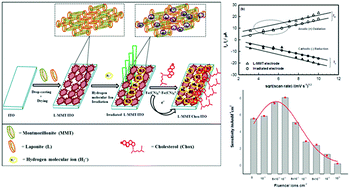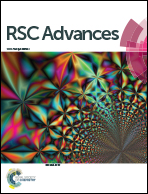Effect of hydrogen ion implantation on cholesterol sensing using enzyme-free LAPONITE®-montmorillonite electrodes
Abstract
Ion irradiation experiments were performed on LAPONITE®-montmorillonite/indium tin oxide (L-MMT/ITO) films using a 20 keV H2+ ion beam with variable fluence ranging from 1012 to 1016 ions per cm2, and the electrochemical profiling of these irradiated electrodes was done using Cyclic Voltammetry (CV) and Electrochemical Impedance Spectroscopy (EIS). Scanning electron microscopy (SEM), X-ray diffraction (XRD) and Fourier transform infrared spectroscopy (FTIR) were used for pre and post-irradiation morphology study and binding analysis. FTIR spectroscopy indicated the implantation of low-energy H2+ ions resulting in the formation of new bonds. The enhanced cholesterol sensitivity of irradiated films up to a fluence of 1013 ions per cm2 was observed due to morphological changes taking place in L-MMT films. Close to 20% enhancement in cholesterol sensitivity was noticed, when the ion fluence was ≈1013 ions per cm2. The sensitivity for cholesterol detection of the L-MMT electrode formed through H2+ ion implantation clearly exhibited a strong dependence on the fluence of the ion beam. The radiation-induced enhanced sensitivity can be proposed as a platform for development of a more effective enzyme-free strip sensor.


 Please wait while we load your content...
Please wait while we load your content...